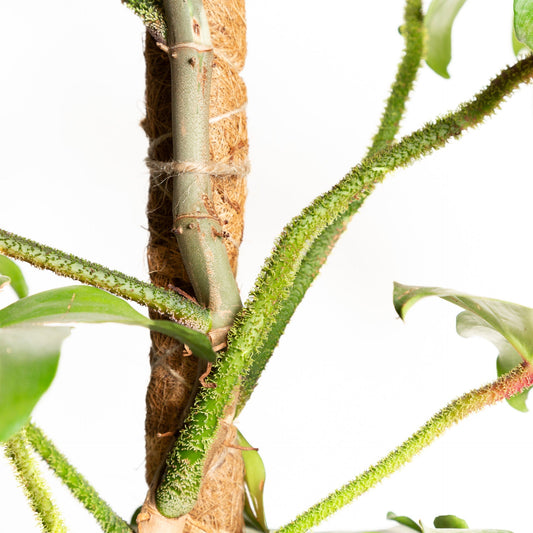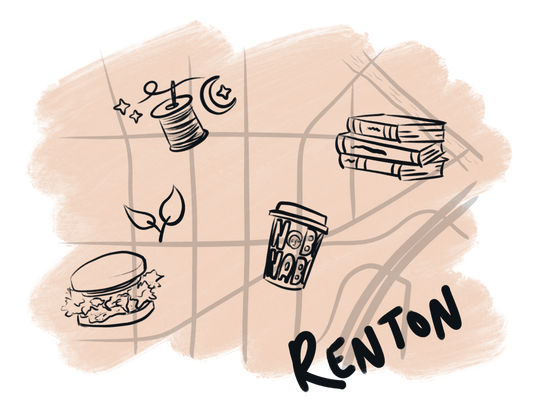Hooray! It's May and the sun is finally making an appearance! Especially here in the PNW - we are all a little starved for sunshine by this time of year, so if it's over 65 degrees you’ll see a lot of people breaking out their shorts and tank tops. Since this is our response to finally seeing the sun it is only natural to assume that our house plants are also yearning to soak up some of those rays! Right?..
Before you move your plants outside (either to stay or just to enjoy for a few hours) let’s talk a little bit about the science of plants and sunburn:
It seems odd that creatures who historically have lived outside would be damaged by a few hours in the sun. But consider this: for thousands of years (most) plants have evolved to exist in one spot. Wherever they germinated as a seed is where they would spend their whole lives. Conditions around them shift as the seasons turn, or perhaps a nearby plant would decay and fall over, but for the most part changes in their environmental conditions happen gradually.
People and animals, on the other hand, move around constantly and are therefore exposed to different conditions all the time. As a result we have developed acclimation techniques. We can produce extra melanin in our skin, sweat, and grow hair just to name a few. Plants, however, have only very recently become mobile (when humans started growing them in containers and transporting them all over the world) so most haven’t developed fast acting defences for suddenly being moved from inside to outside.
When people haven’t been in the sun for a while and then spend an afternoon outside (without sunscreen) we get sunburnt! This flushing and then darkening (tanning) of our skin is a defence we have developed over a long period of time to protect our bodies from the harmful effects of the sun’s radiation. It is essentially our outer layer of skin cells sacrificing themselves to create a barrier between the sun and the unexposed cells underneath.
Plants experience sunburn a little bit differently. Most of a plant’s surface area is made up from thin leaves that are only made up of a few layers of cells. If exposed to a lot more sun than they’re used to, the increase in radiation will damage the top few layers of cells (just like when we get sunburnt). Since their leaves are only a few layers thick and plants are not able to regenerate tissue, the whole leaf will often be damaged beyond repair.
Plants are exceptionally adept, however, at making adjustments that happen gradually! This is how they are able to endure seasonal changes outdoors! So, feel free to show your plants love by giving them some sun, just make these changes happen gradually to protect their delicate “skin”. Start with just a few hours when temperatures match the conditions indoors closest (usually morning to early afternoon) and provide filtered light at first. Place in the shade or put up a curtain or some kind of barrier so that the light is diffused. After a few days your plant will be used to these conditions and you can take another step towards transitioning it to brighter light. Avoid keeping plants outside in the hottest part of the day and overnight at first.
Ok, so how do I know if my plant has sunburn, and what do I do about it?
A minor sunburn on most plants will look a lot like when a person gets a sunburn (where the surface closest to the sun turns red and then fades to the normal skin color where it isn’t burnt) except it will be white or light brown instead of pink or red! Oftentimes a burn like this won’t lead to the death of the leaf or the whole plant. This type of sunburn is most commonly found on plants that are from warmer climates or that have thicker leaves. Aloe vera and Aglaonema are two types of plants I will often see this type of burn on. If you find this discoloration unattractive you may trim those leaves off but it won’t affect the long term health of the plant if you chose to leave them attached. To prevent further burning move back to a less direct light source and slowly transition into stronger light over a couple of weeks.
A severe sunburn will usually look like patches of light brown tissue on the plant’s leaves that are thin or even paper-y in texture. In thick-leaved plants the burns can look sort of like craters or dimples with the same light brown coloration. These spots will normally have defined edges rather than the faded color found in a minor burn. Depending on the severity of the burn and where it is, this type of sunburn may lead to leaf or plant death. If most of the tissue in a leaf is severely burned, trim that leaf or part of the plant away for best results. This type of burning is more common for plants that are not used to getting any direct sunlight in their natural habitats such as Calathea or Peace Lilies, but could happen to just about any plant exposed to too much light too quickly.
Have you experienced plant sunburn before? Tell me about your experience in the comments below or if you have questions I can answer in a future article! =]




Comments (3)
Thank you for the advice. Every spring I put my plants out on the steps and every year the poor things get sunburned. Now I know what to do to prevent this from happening. Thank you again.
LyfAmTpFvlWUgR
UlSytGiZKMr